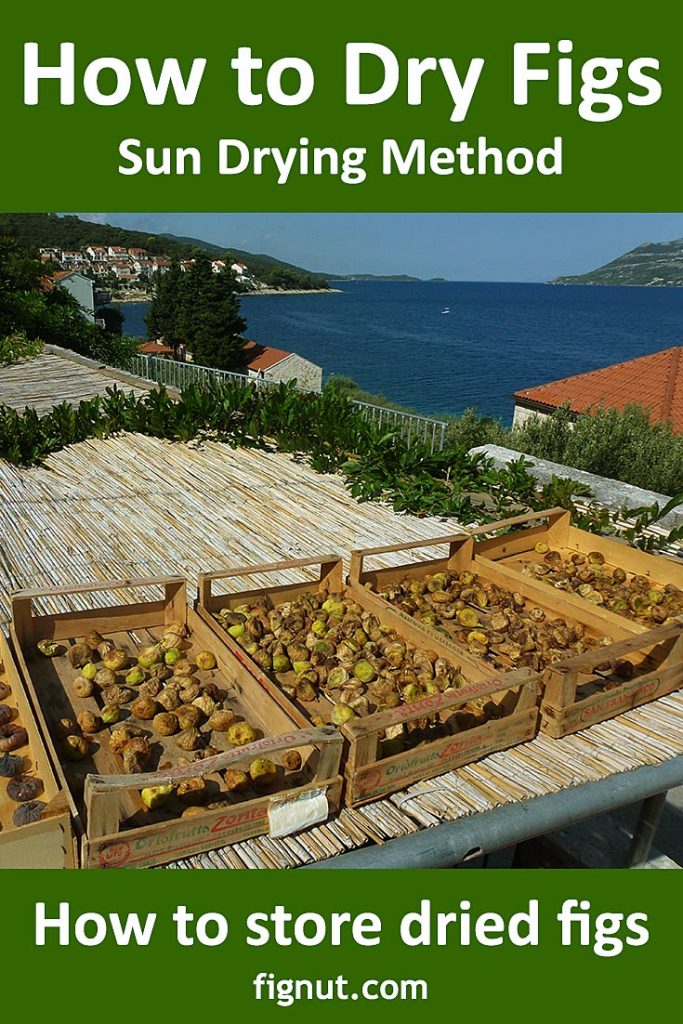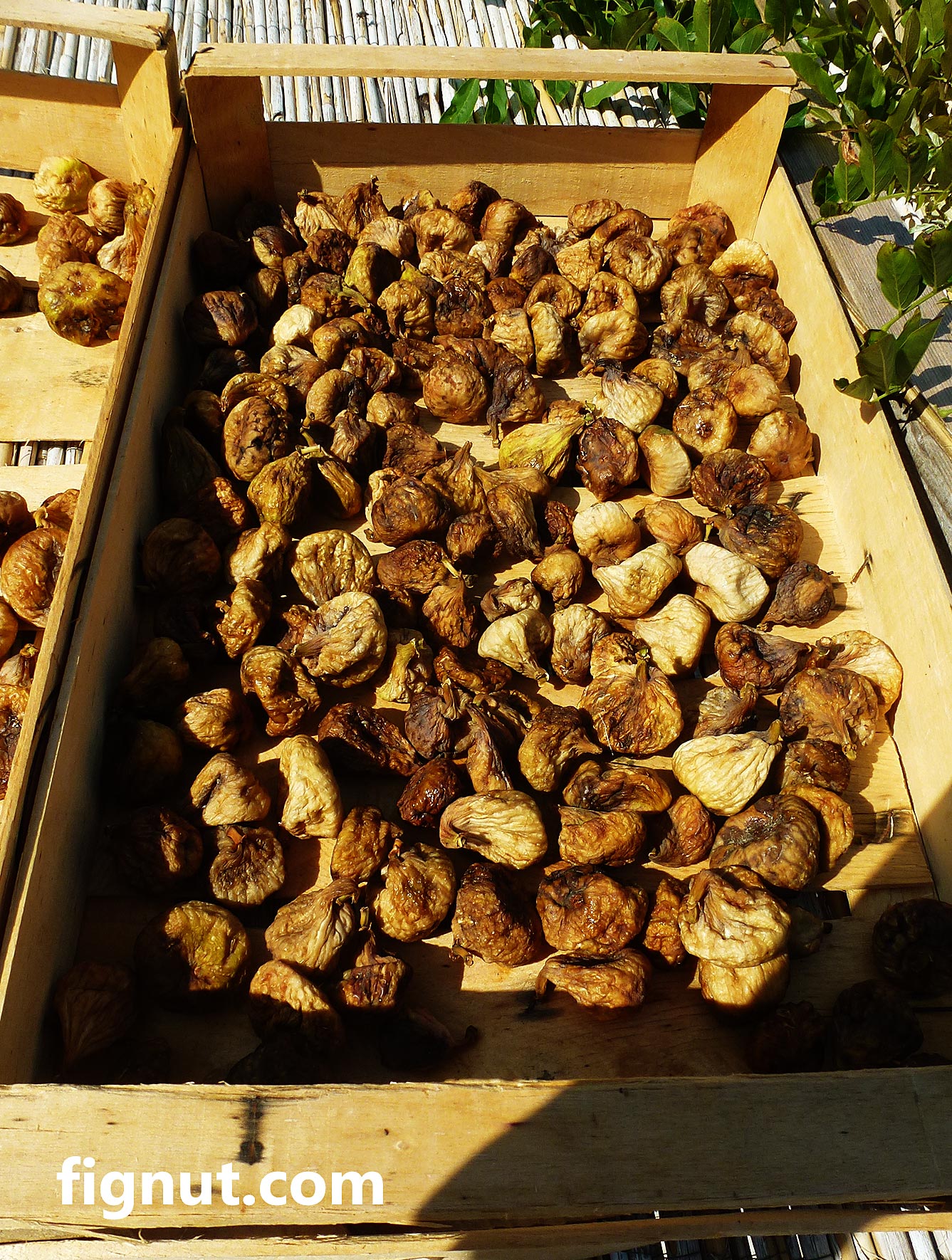
Table of Contents
Sun dried figs
I have several large fig trees that every year produces a lot of fresh fruits. I also have some baby ones, including three-year-old fig trees, that just started to fruit this summer. As I am living in a fairly dry and warm climate, every summer I select some of the fruits to dry them in the sun at home on my terrace.
Basically, the drying process is to leave them outside on the sun and in the windy position and they dry within 7 to 10 days, depending on the temperature and humidity for good dehydration. As far as drying temperature is concerned, the most important thing is to dry them in sunny and dry weather. Try to avoid rainy days and high humidity. In the case of the rain, cover your trays with a plastic sheet or, even better, take them inside in a cool, dark, and dry room while the rainy day is over.
In my opinion, to dry fruit naturally is the best way compared to any other drying process including a dehumidifier, microwave, or convection oven.
Sun drying method
Depending on how much fruit you choose to dry, you would need to get some drying trays. I tried various options and ended up using disposable fruit trays that I collected for free from my local fruit store (see above photo). These fruit trays are handy to use as they are stackable so you can use several of them in the small space.
Step by Step drying method
Step 1: Carefully pick the figs from the tree. Make sure you chose the best selection of the whole figs, ones that are ripe and sweet.
Step 2: Put your figs on the drying trays. Place the drying trays on the sunniest and windiest position available in your garden. I place my trays on the roof of the terrace as that location has the longest hours of the sunshine and it is pretty windy (top photo).
Step 3: Every day, check your figs and turn them on another side. This is important to do daily to prevent rotting and to make sure all sides of the fruit are evenly dried. If you notice any insects, wasps, or ants coming to your fruit, cover the trays with a mesh or light cotton cloth. After a week of being exposed to the full sunshine and wind, the fruits are completely dried and ready to be stored. Here is the result:
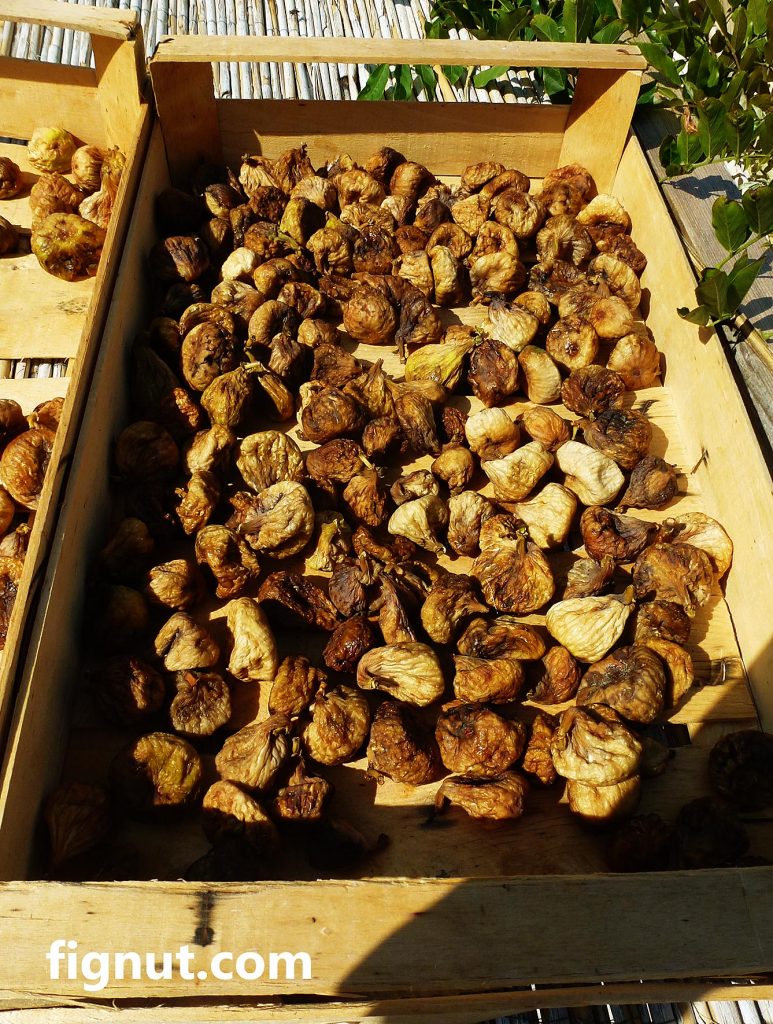
On the above photo, you can see figs that are dried and ready for storage. The pieces of fruit that are already dried are of dark yellow / brown color. There is also a piece that is still greenish, it means it needs longer drying.
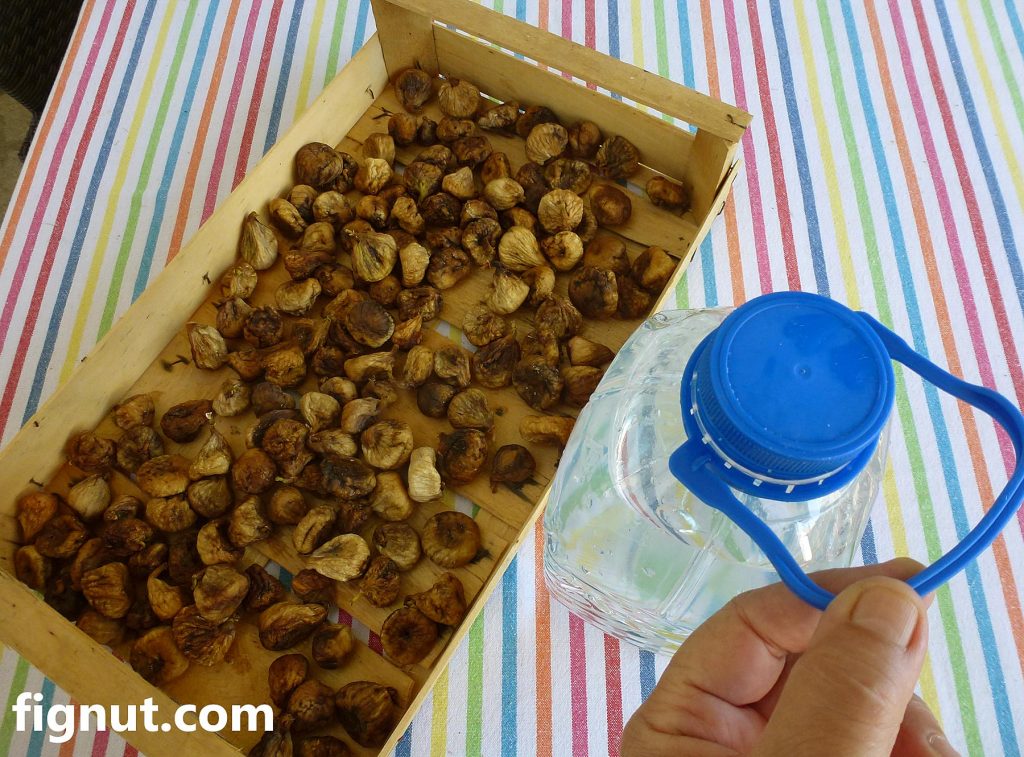
Step 4: Once your figs are dried, get some seawater (about 3 to 5 liters, depending on how much fruit you have). If you can’t get seawater, then get some sea salt and mix it with the drinking water. Use 100 grams of sea salt for 5 liters of drinking water. Put the water in the bowl and place it on the hob to boil.
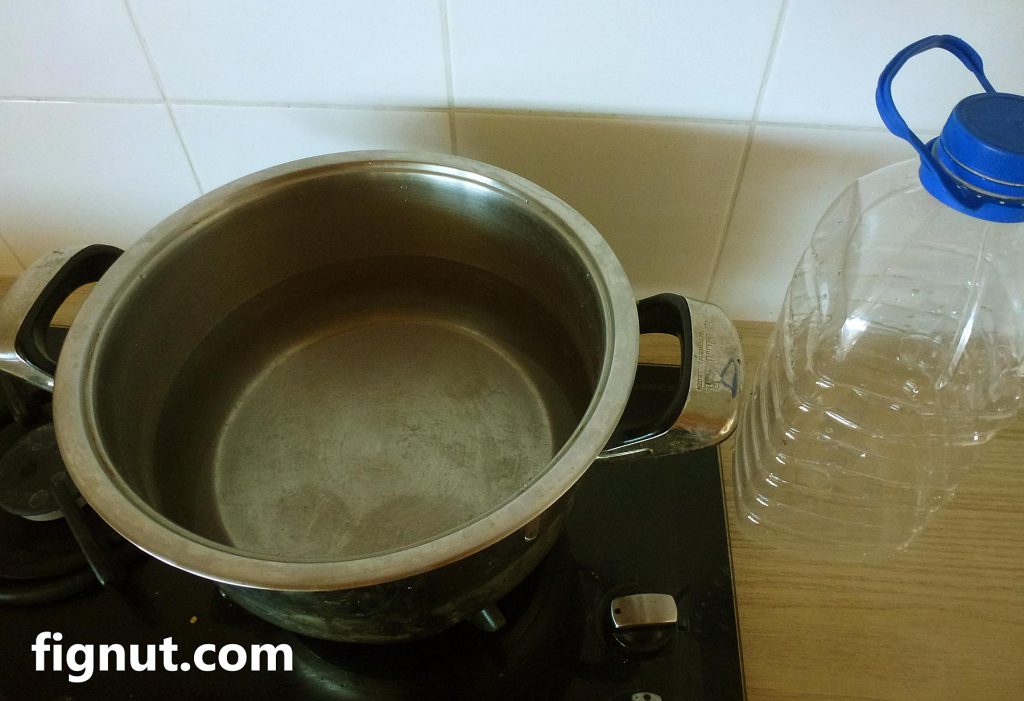
Step 5: While you wait for the saltwater to boil, take a mesh bag, large enough to hold all of your figs. I use one that I get with potatoes which I buy in the shop – (see below photo). Put all your dried figs in the bag.
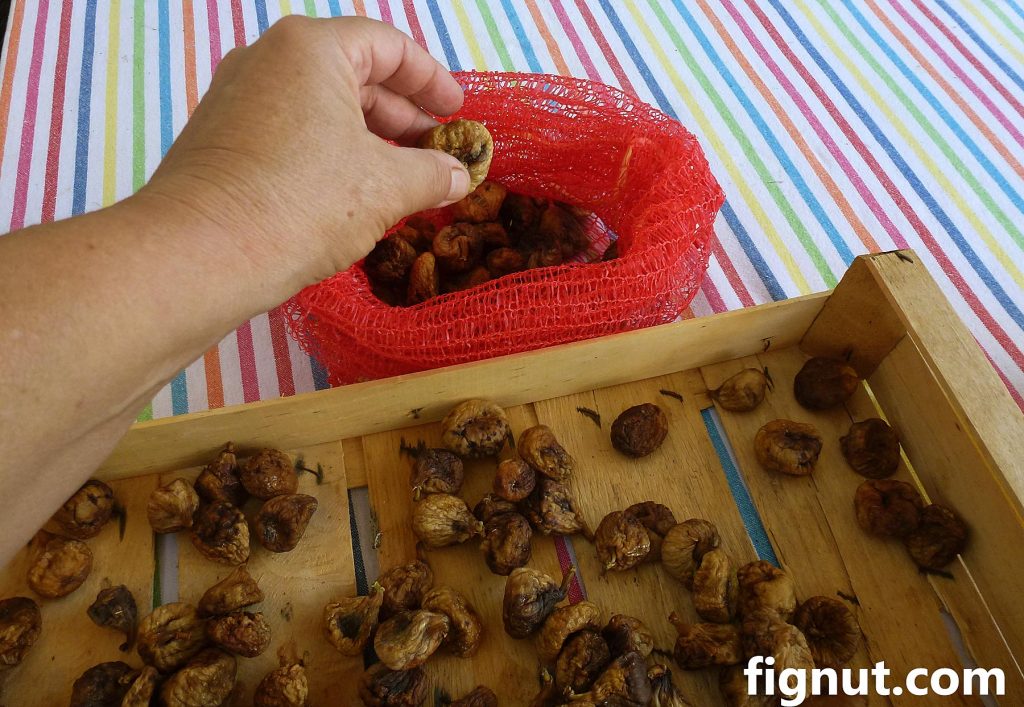
Step 6: Dip the mesh bag with your fruit into the boiling seawater (saltwater). I usually dip them 8 times for 15 seconds. Between each dip I keep them out for 20 seconds to drain and prevent figs to get mashed.

Step 7: Place you bag with fruit in the bowl to drain for 2-3 minutes.
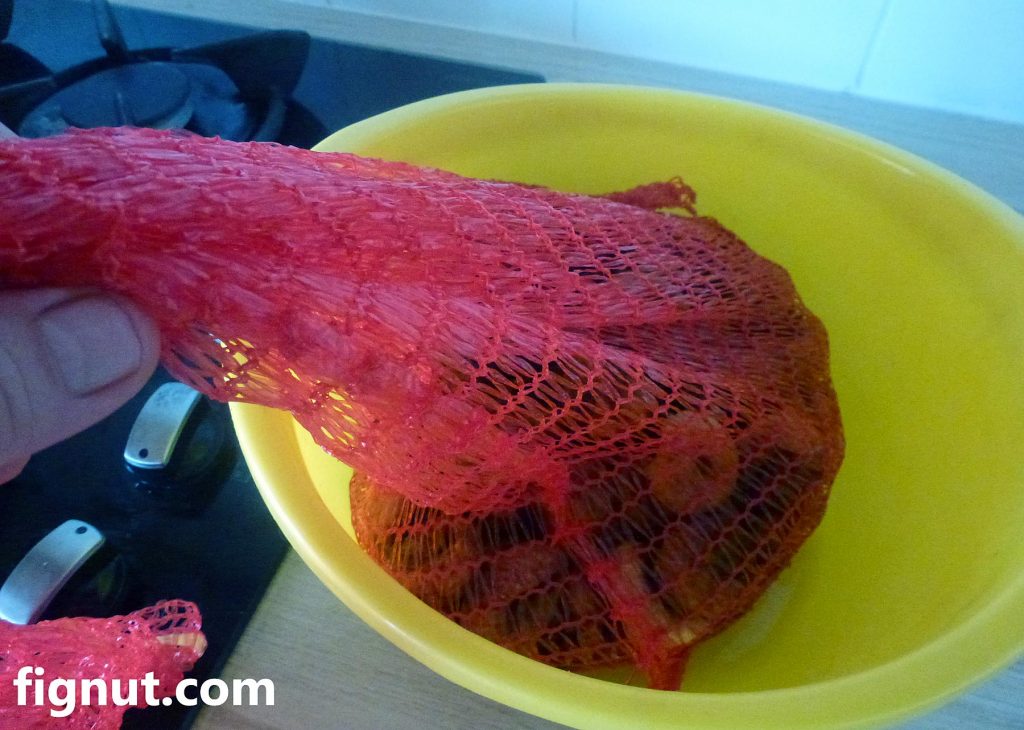
Step 8: Put all your dried figs into the tray that is layered with baking paper. This is important to keep the figs clean as from now on, these figs are ready for consumption.
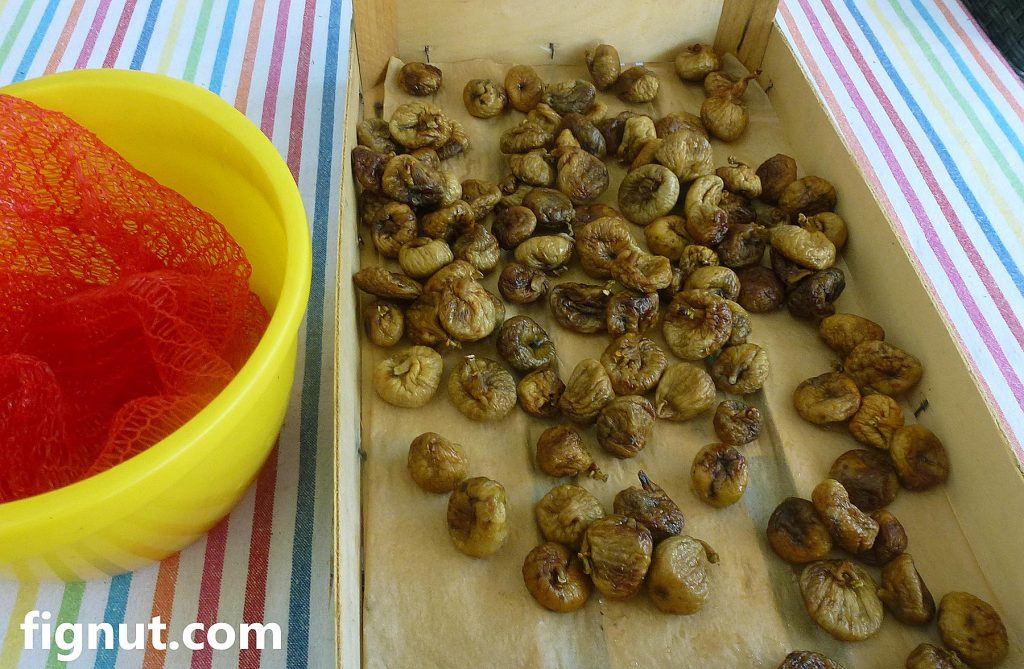
Step 9: Put the tray on the sunshine for an hour or two, just to dry the water off. Cover the tray with mash or cotton clothing to prevent any insects from reaching it.
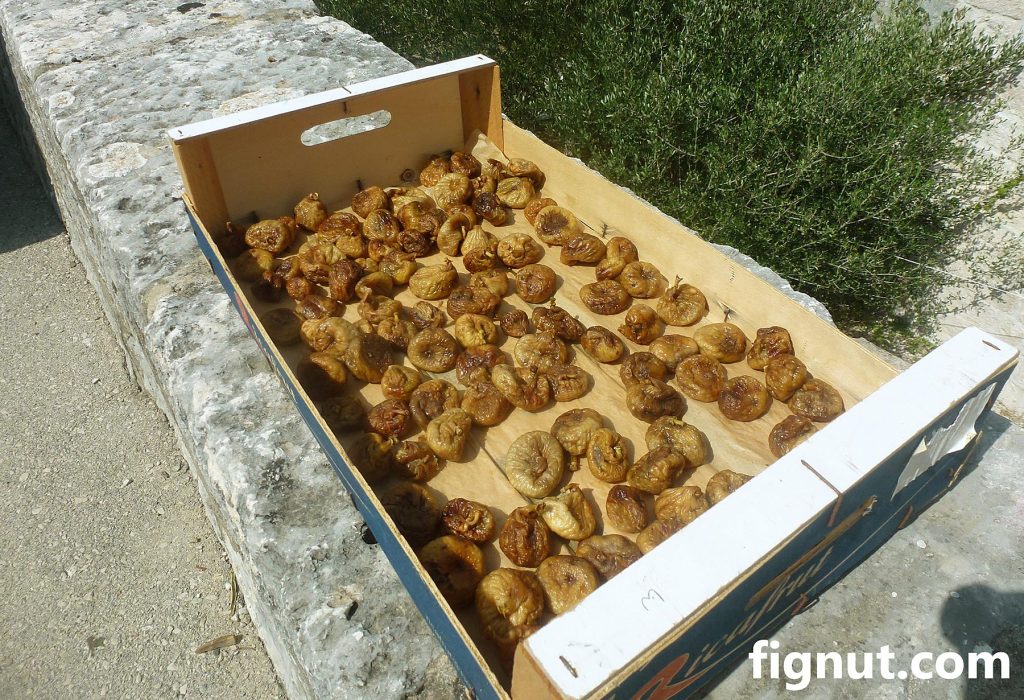
Step 10: While you wait for the fruit to dry, cut some wild fennel (Foeniculum vulgare) and bay leaves (Laurus nobilis) to prepare it to be mixed with the figs for storage. Here is how it looks:
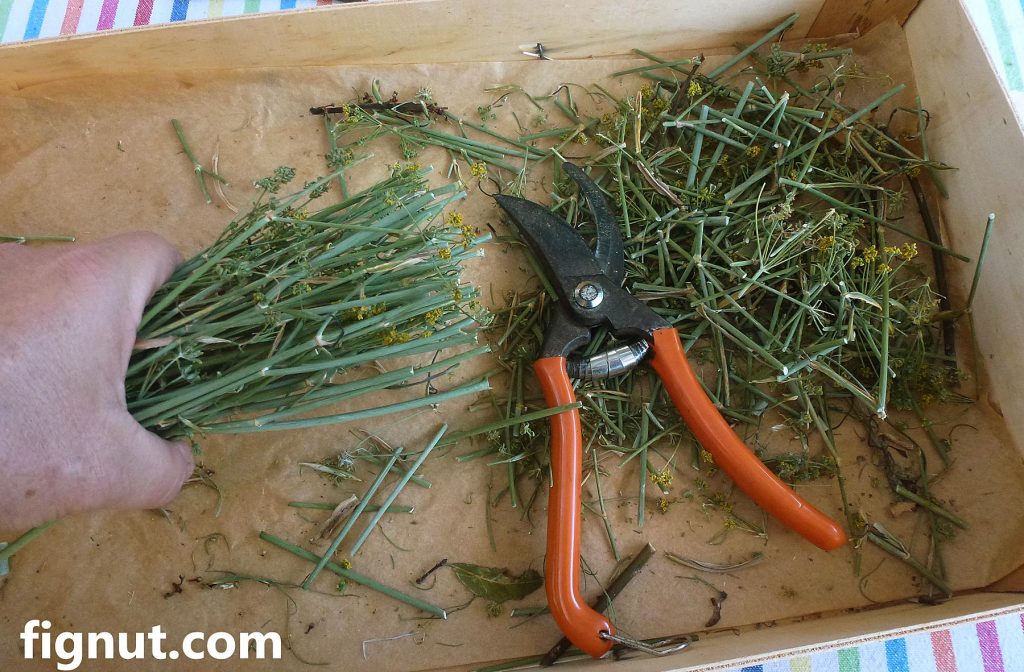

Step 11: Mix your dry figs with wild fennel and bay leaves and store it into the strong cotton bag.
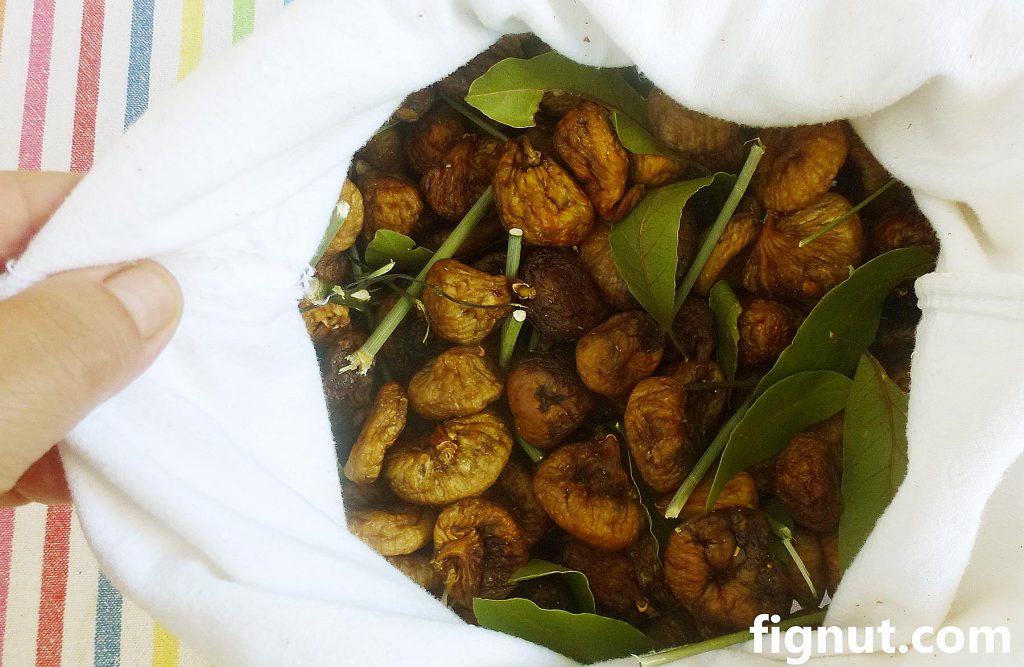
How to store dried figs
In the Cotton Bag
You can store your dried figs in a cotton bag. This is a traditional way to store. Keep the bag in the dry, dark, drafty, and cool place where your dry figs can stay for months and months ready for consumption anytime you wish.
In the Fridge
Place your figs in the dry food container. Make sure it is tightly closed to prevent any moisture coming in. Put it in the fridge where you can keep it for at least 6 months.
In the deep freeze
You can also deep freeze dry figs – the process is simple: place them on the tray, separated from each other. Put the tray in the freezer for 24 hours. Following day, take the tray out and put already frozen figs into the food bag. Place the bag with figs in the freezer. With this method, you can then take any amount of the figs out for consumption as they are frozen separately.
See my other article on how to store dried figs
What does a dried fig look like
This is how dried figs looked like
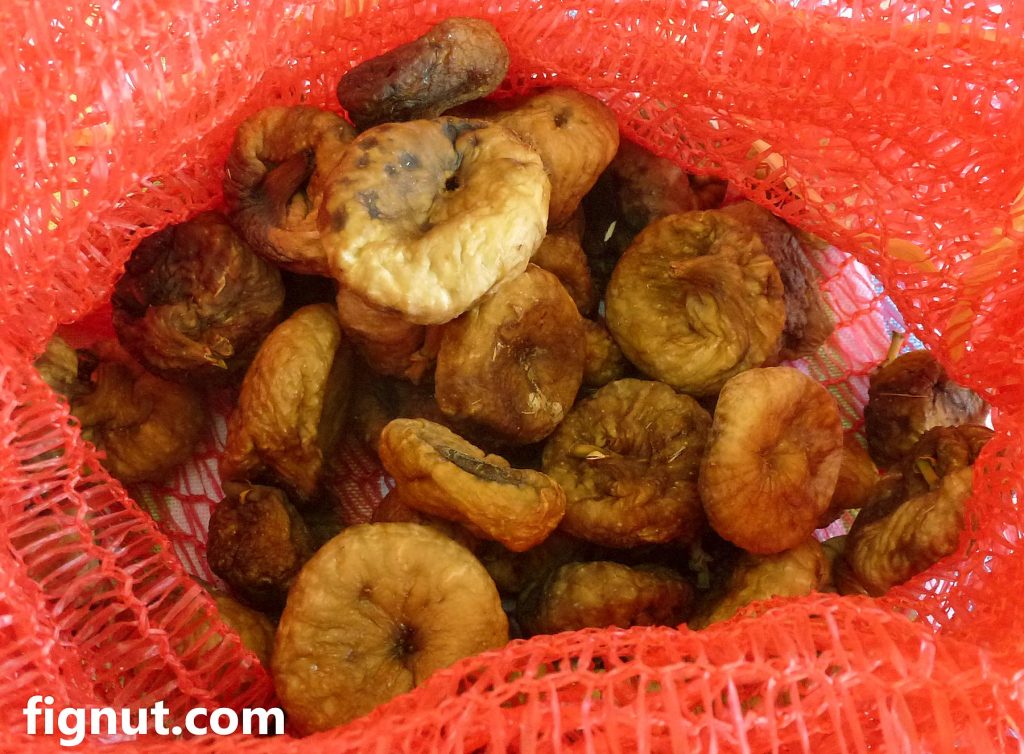
Dry figs on a tree
Probably one of the best ideas on how to dry figs is to let them dry as much as possible while still hanging on the tree. The difficulty with this option is that often, as the fruit is drying the also fall from the trees. To prevent the fruit to fall on the ground and rotten, get some mesh, spread, and hang below the tree so all falling fruit is collected. This way, none of the fruit will fall on the ground and rot. Every day, just come and pick all fruits from the mesh.
How to eat sun-dried figs
Video
In this video I make dried figs stuffed with almonds and coated in dark chocolate – easy to make at home – have a look:
My sun-dried figs recipe
I used dried figs for breakfast accompanied with or without apricots and almonds – I mixed them with some cereal and milk. In the evening before, I would just put a couple of pieces of fruit in the bowl with some milk and left it overnight. By morning the fruit was already soft and ready to be eaten as a part of my healthy breakfast. The dried figs usually last me for the whole winter.
